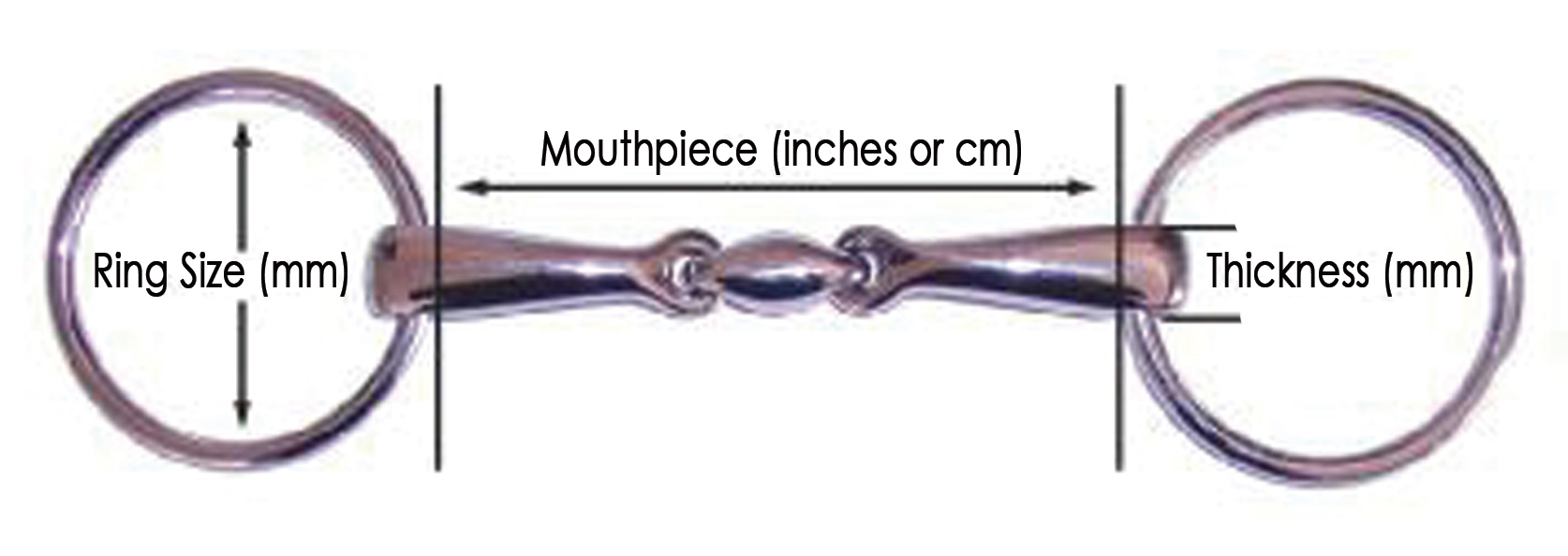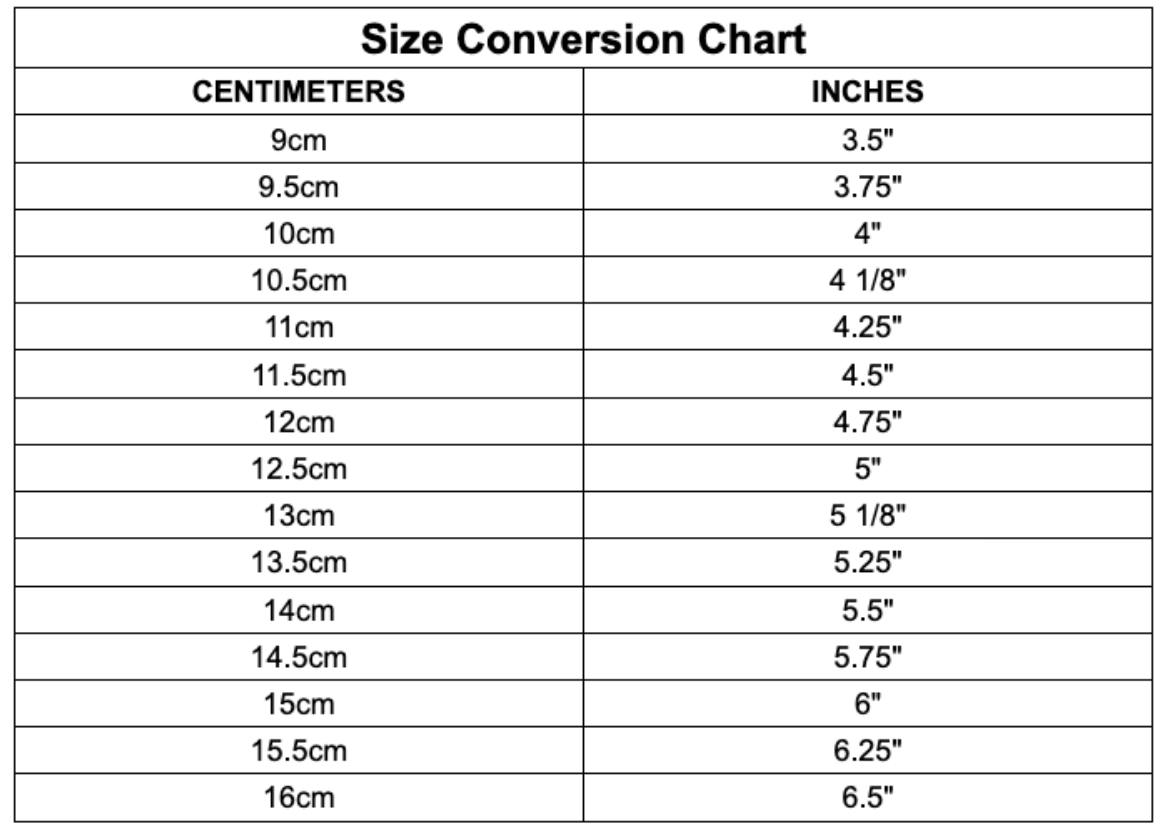Sizing & Fit
Ensuring you have the right size and fit of your new or current bit is very important. A bit that is too large will move from side to side and this can cause cuts, sores or damage to the lips and inside of the mouth. A too large bit is not working correctly in the mouth and is not helping you to transmit clear aids. A bit that is too small will be pinching or squeezing the horse's face and can again cause discomfort and damage.
Measuring your horse
The simplest, easiest and quickest way to accurately measure your horse's mouth size is to use a Bit Measure. An easy to use tool, this will give you an accurate measurement in inches or cm. You can download one for free from here and make your own, or purchase a ready printed cardboard version here . A very useful tool for any horse owner!
If you don't have a Bit Measure, you can use a piece of dowel or string but you may need a friend to help mark the measurements across. Be sure to place whichever measure you use in the mouth where the bit will normally sit to get an accurate measurement.
Measuring your bit
If your current bit fits well, you can use that size as a guide when shopping for a new bit. To correctly measure your bit's size lay your bit on a flat surface. Use a ruler or measuring tape and measure along the mouthpiece of the bit, from the inside of the ring to the inside of the ring, as illustrated below. Measuring along the entire mouthpiece (to the outside of the rings) is incorrect.
See the illustration below for the correct areas to measure for mouthpiece width and ring diameter.
Bits are made either in cm (metric) or inches (imperial) depending on their country of origin. Inches and cm don't always convert perfectly, so best to take your measurements in both.

How do you know if your bit fits your horse?
For a single jointed bit, you need to leave almost 1 cm on each side between the rings and the horse's lips with the bit at rest in the mouth. This is because as the contact is taken up, a single jointed bit shortens in the mouth and the rings come closer to the lips and side of the face, as you need to allow enough width in the bit for this movement.
For a double or lozenge jointed bit, you can have the lips sitting just next to the rings or cheeks as when a contact is taken up, the rings will move evenly away from the lips. If you have 1cm on each side between the lips and the rings in a Neue Schule, Sprenger or any french or double jointed bit it is too large for your horse and will be uncomfortable and ineffective.

A correctly fitting Neue Schule bit showing the lips sitting close to the rings at rest.
For a straight bar or unjointed bit (such as pelham, weymouth etc) the lips should sit just touching the cheeks of the bit when at rest. Any larger and the bit will slide from side to side and be uncomfortable and ineffective.
Myler bits will sit differently again. The shape of the mouthpiece means that more than usual will appear outside the mouth at the corners of the lips, desigend to prevent any pinching to the lips.
Generally, your weymouth bit is 1/4" smaller than your snaffle/ bridoon size, as it sits lower in the mouth at a narrower part of the jaw. So if shopping for a double set the first time, you would buy your bridoon the same size as your current snaffle and the Weymouth a 1/4" smaller. (e.g. a 5.5" snaffle means a 5.5" bridoon and a 5.25" weymouth).
Size Chart

For more information or if you are unsure if your new bit fits, please contact us.
 AUD
AUD  New Zealand Dollars
New Zealand Dollars
 US Dollar
US Dollar
